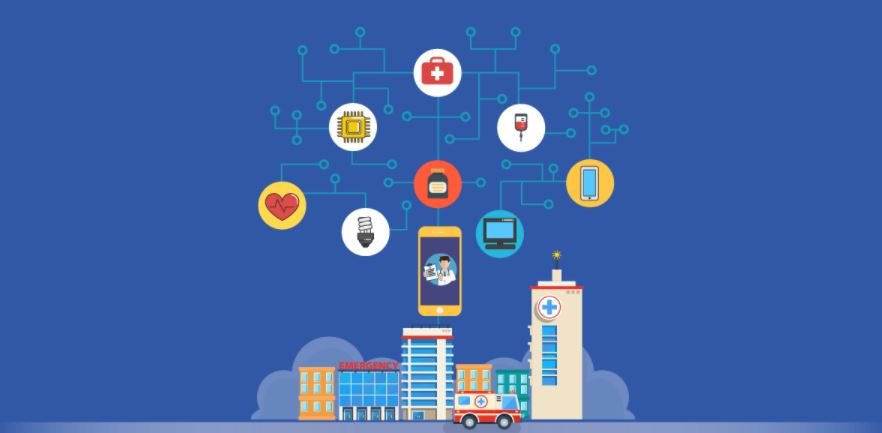IoT is booming today. Technology is at its peak when it comes to advanced devices and their changes. The global market for Internet of Things (IoT) medical devices is anticipated to grow to more than a whopping $500 billion by 2026, which will largely cause significant changes in the healthcare IT sectors. Modern medical equipment and devices are emerging into the field of medical sciences, which makes the medical workers’ responsibilities more relaxed. COVID 19 has agitated the lives of people throughout the globe. At the same time, people are seeking more healthcare and end-of-life care. As per WHO, we are already being affected by a global scarcity of 7 million health workers, this could indeed go up and reach 13 million by the year 2035.
If there’s more digital transformation happening, it is safe to say that it’s impacting more than ever on healthcare. And that transformation is progressing at the edge.
Edge computing is striking a major role in health services. Today, edge computers are being utilized to monitor patients, automates the delivery of care, and with the help of artificial intelligence, it enhances the speed and precision of diagnoses.
What is IoT
IoT or the Internet of Things is a total network of physical objects, which is regarded as “things” that are combined with software, network, electronics, and sensors, that approve these objects to accumulate and exchange data. It joins these so-called “things” and makes things interconnected and has the potential to execute certain tasks. One of the main responsibilities of an IoT architecture is to secure internet connectivity between devices such as industrial machinery, smart home gadgets, healthcare devices, and even smartphones and laptops.
Over the past few years, IoT has had a tremendous influence and has become one of the most prominent technologies of the 21st century. The Internet of Things expedites seamless communications between people, processes, and things.
With the power of AI algorithms, data collection, and other networks, IoT makes almost every device ‘smart’, by enhancing aspects of our life. The ‘thing’ in IoT can be almost any device today, even a remote-controlled drone or an animal tracking device. This presents the fact of how far IoT has unfolded.
What is Edge Computing?
Computers evolved step by step. For example, first, there was the ‘One Big Computer’, and then came the personal computers, and then gradually appeared the cloud computing era. We get hold of personal computers, frequently to get hold of centralized services like Dropbox, Office 365, Gmail, etc. Anyway, taking this information into account, there are giant companies that rely on this framework, machine learning, and compute power of cloud providers like Amazon, Google, Microsoft, and IBM.
In this context, the word ‘edge’ indicates the literal geographic distribution. Edge computing is a sort of computing that is displayed on-site or near a distinct data source, degrading the need for data to be implemented in a remote data centre. Here, one of a dozen data centres does all the work, instead of depending on the cloud.
Advantages Of Edge Computing in IoT
The prime objective of edge computing is to decentralize data handling. There are many benefits of edge computing in IoT. They are-
- Greater App Performance– For the data to travel backward and forward with a device and the data centre, it needs some time. You can enhance the overall app performance by filing and processing data nearby its source. This also shortens the lag time and you can evaluate the data in real-time, without any setbacks.
- Enlarged Data Security– This is one of the central benefits of edge computing in IoT, as it safeguards your network and enhances overall data privacy. It is a bit challenging to take down the whole network as the data is centralized or designated among the devices where it is composed.
- Lessened Operational Costs– You don’t need an excess of cloud storage when you store and process the data in the so-called “edge”. Furthermore, you can set out irrelevant information and store relevant data.
- Clarified Business Reliability – When there’s low data traffic and decreased cloud storage, it occurs in more productive business operations. Moreover, connection issues won’t be much difficult as they are for different IoT products that depend on the cloud.
- Amazing Scalability– With the guidance of edge computing, assists you to scale your IoT networks.
How do Edge Computing and IoT Play a Crucial Role in Healthcare Services?
Edge computing presents a major role in healthcare services. It has become an immense benefit to the medical industry as it produces several advantages today.
- It benefits in real-time analytics and data processing.
- It permits more authority over the data and its security classifies breaches earlier.
- Succeeding actions and monitoring crucial vitals are powerful even in areas with weak connectivity.
- Meeting supervisory compliances, adopting edge capabilities and services attempts to maintain patient data nearby to the source.
- It controls latency as well as downtimes.
- It accommodates in controlling costs as IoT and wearable devices can assist healthcare organizations to preserve up to 25 percent of their business costs.
Whereas in healthcare delivery, edge computing assists in-
- Powerful tech IoT and edge devices, which are sent out by patients, constantly record their vitals.
- With the aid of customer premises equipment (CPE), gateways, and fixed switches, certain data are transferred to the most neighbouring edge servers for processing and the outcomes received would be delivered immediately to the patients.
- The data that prevails on edge servers is automatically synced with the cloud on a set periodic basis.
- In additional cases, the edge computation device can be allocated directly for analysis and results.
Conclusion
IoT and edge computing is gaining worldwide recognition today in the field of medical sciences and the rise of edge computing is conspicuous in nearly every field, but most importantly in the field of health services and medicine. It has revealed tremendous progress and has donated broad advantages and has benefited patients and the job of medical workers to fit more comfortably. Particularly during the pandemic, edge computing and IoT services have presented a crucial role, in observing patients from remote locations and coming up with an action plan.
The tech world is developing faster than ever before and preparing for more breakthrough discoveries in the next coming years.





